Solar Microgrids: All you need to know
Solar Microgrids: All you need to know
What is a solar microgrid?
In simple words, solar microgrids are connected power grids or networks. The system collects, stores, and provides clean electricity to an entire town or city using energy produced by the sun. This is accomplished by positioning batteries and sizeable solar panels in a strategic area.
This center area sometimes referred to as a “hub”. Moreover. “hub” is where all the technology is kept in a safe room, frequently beneath the solar panels themselves. Mainly, the solar microgrid is finished by connecting electrical cables from the central power location to local homes, businesses, and farms.
How does a solar microgrid work?
A solar photovoltaic (PV) array collects and produces electricity from sunlight. A solar charge controller is used to control the voltage and current. By doing this, the batteries and solar panels are shielded from harm from overcharging. The combiner box then gathers all the electricity produced by the PV array.
Additionally, it permits a single, consolidated connection to the inverter prior to distribution to the neighborhood. Through the AC/DC inverter, some of the electricity is then directly distributed to customers.
By using an inverter, consumers receive the appropriate electric current for their needs. Depending on how much sunlight there is and how much energy the community uses, some of the electricity produced is stored in batteries for later use. The community can monitor consumer usage with the help of the meters installed.
At last, on-demand electricity is delivered to the home, place of business, or farm. The solar microgrid has a safe control panel that specialists and community members may use to monitor, manage, and repair the system as necessary.
Where are the solar microgrids appropriate?
The solar microgrid is widely regarded as a practical and reliable alternative for rural electrification worldwide. The distant villages that are unable to link to the current infrastructure offered by the government or private firms are best suited for these systems. Solar microgrids are ideal for settlements on tiny islands, in mountainous areas, and in far-flung rural places.
They work best when there is a lot of sunshine. They are dependent on the sun. Most systems also feature storage capacities that enable them to function during periods of scant sunlight, which helps them deal with gloomy weather.
Why use a solar microgrid?
- Improves Electric Reliability
By isolating themselves from the grid during a power outage, microgrids maintain power. This is called ‘islanding.’ When it detects an outage, the system’s controller effortlessly changes from grid power to the microgrid’s local power sources. Customers are then served by solar, generators, battery energy storage, or other microgrid distributed energy sources until the grid’s electricity is restored.
- Enhances resilience and recovery
A microgrid gives its clients energy resilience by preventing power outages in the first place or responding fast when they do happen. The microgrid can be set up to restart a facility’s whole electrical system or the vital parts in the event of an outage. The facility may restart regular operations as the grid power gets restored.
- Lower energy costs for consumers and businesses
By effectively regulating the energy supply, microgrids can lower the cost of energy for their customers. It enables them to plan more easily their short- and long-term energy expenditures. Energy prices fluctuate throughout the day.
An advanced microgrid can take advantage of this unpredictability by managing how much electricity is drawn from the grid vs nearby battery storage and generating sources.
Microgrids may be able to continuously offer energy at a lower cost in regions with high electricity rates. On-site energy that is produced in excess can be sold back to the main grid. Customers with microgrids can take advantage of this benefit.
- Promotes clean energy
More businesses and municipalities are seeking ways to lessen the impact of their power generation on the environment and achieve clean energy targets. Microgrids can utilize a wide range of green power generation technologies. Which includes solar, wind, fuel cells, combined heat, and power (CHP) plants, and energy storage, due to their capacity to mix distributed energy sources seamlessly.
Many CHP plants employ natural gas generators, which are among the cleanest fossil fuels. When renewable energy sources are not available, such as when the sun is not shining, a microgrid can draw power from other sources.
- Faster Construction
As we know conventional power plants require a substantial investment, extensive planning, and years to build. Microgrids on the other hand are built faster as they are relatively more compact than traditional solar panels.
Solar microgrids have a lot of potential as renewable energy solutions in the future. However, they can be sustainable and profitable only when there is direct involvement, training, and cooperation of communities.
Suggested Articles
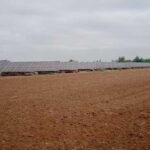
Best Solar Panels for Rooftop Projects: How to Choose the Right One
Selecting the right solar panel is crucial for rooftop project success. This guide explains how to evaluate panel types, efficiency, warranties, and performance to ensure maximum power output and long-term savings for your home or business.

Updated Rates of Solar Subsidy in Delhi: Cost, Eligibility & Benefits
Discover the latest solar subsidy rates in Delhi for 2025. This guide explains the updated costs, eligibility criteria, and benefits to help you maximize savings on your rooftop solar installation.
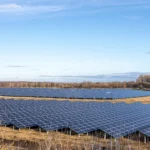
100 kW Solar Plant Cost in Rajasthan: Latest Cost, Maintenance & Payback Time
Installing a 100 kW solar plant in Rajasthan costs around ₹40–60 lakh in, with annual savings up to ₹10–12 lakh. Discover maintenance needs, ROI, and payback period of 4–6 years.
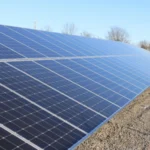
How Total Solar PV Power Affects Solar System Efficiency
Total solar PV power represents the combined power output of a solar photovoltaic system. This guide explains its meaning, calculation, and how it directly impacts solar performance, efficiency, and long-term energy generation.
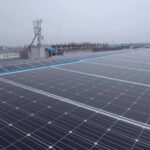
Stop Losing Power: The Ultimate Guide to Solar DC & AC Cable Sizing for Max Efficiency
DC and AC cabling are the lifelines of any Solar PV Rooftop System. Learn how proper cable selection, connection design, and installation can help achieve optimum power output and long-term safety.
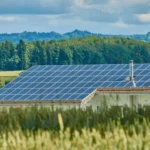
Difference Between Solar Power and Photovoltaic: Explained Simply
Total solar PV power represents the combined power output of a solar photovoltaic system. This guide explains its meaning, calculation, and how it directly impacts solar performance, efficiency, and long-term energy generation.

Haryana Electricity Tariff Hike Impacts All Consumer Categories in 2015-16
Haryana electricity tariffs were increased across all consumer categories in 2015-16, raising power costs for households, industries, and businesses statewide.

Solar Inverters India: How to Choose the Best for Your Solar System
India’s solar market offers a wide range of inverters, making selection challenging. This guide explains key factors to consider, helping users choose the right inverter for residential, commercial, and industrial solar projects effectively.
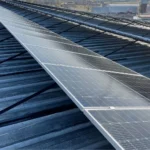
BOOT vs PPA Explained: Find the Best Way to Finance Your Solar Plant
Choosing between the PPA and BOOT models can significantly impact your solar savings. This guide compares both financing options to help businesses make the right decision.

1 MW Solar Power Plant Cost in Rajasthan: A Complete Guide
A detailed guide on the cost of setting up a 1 MW solar power plant in Rajasthan. Learn about pricing, EPC components, land needs, subsidies, and expected payback for commercial and industrial users.